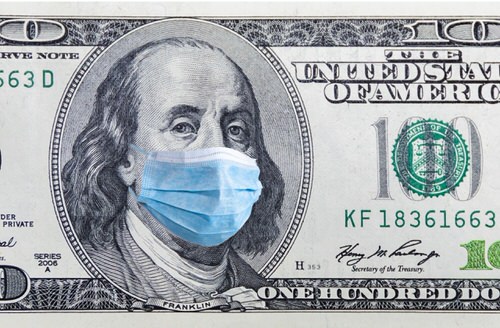Stocks are expensive compared to earnings—there may be a couple of reasons why.
by Jurrien Timmer, Director of Global Macro, Fidelity Investments
Key takeaways
- Stock valuations remain high but this may be a normal part of early cycle recoveries. Valuations are being supported by a couple of factors.
- Monetary policy is one driver of today's inflated P/E ratios. The Fed's quantitative easing programs have increased the money supply relative to GDP growth, which has a positive correlation to the change in P/E multiples.
- The very low risk-free rate (the yield on Treasurys) is also supporting high P/Es—the aging global population may be pushing valuations up due to their need for income.
- The experience of Japan and Europe, with even lower risk-free rates, may be different from that of the US because the S&P 500 generates more free cash flow than its ex-US counterparts—and more stock buybacks.
While the market is working through its second correction since the March 23 low, this is a good opportunity to ponder a larger issue: Is the current high price-to-earnings (P/E) ratio a sign that the market is disconnected from reality and excessively driven by monetary policy?
Valuation: How much is too much?
About the expert

Jurrien Timmer is the director of global macro in Fidelity's Global Asset Allocation Division, specializing in global macro strategy and active asset allocation. He joined Fidelity in 1995 as a technical research analyst.
My take has been (and continues to be) that the sharp rise in valuation multiples is a natural occurrence during early cycle recoveries, made even higher this time around by the extraordinary fiscal/monetary policy response during the COVID crisis.
P/E ratios will undoubtedly come back down to earth at some point, but as long as earnings start to recover soon it does not need to be at the expense of price. As soon as earnings start to grow again (which, hopefully, may be now-ish), the market should be able to grow into its P/E.
The chart above shows that the early cycle recovery phase for the stock market tends to be driven by P/E expansion. Price typically bottoms a few quarters before earnings, so as disconnected as the market may seem from the economic reality, this is actually a normal occurrence at cycle turns.
2009 offers an example of this. Following the March 2009 bottom in the stock market it took 2 quarters for earnings to bottom. By the time they did, the S&P 500 Index (SPX) was up 50% from the lows. That's similar to what is happening now.
Also, it’s important to remember that while the P/E ratio has expanded considerably off the lows (with the 12-month forward P/E rising from 13x in March to 23x now), the equity risk premium remains in line with its long-term average (bottom panel in the chart below). The equity risk premium (ERP) is the additional return that investors expect to earn over Treasury bonds or the risk-free rate of return. Compared to bonds, stocks don’t look expensive.
How much do the high multiples have to do with the policy response? A fair amount, I think. History shows that the spread between money supply growth and GDP growth is positively correlated to the change in P/E multiples.
The excess liquidity growth will likely come down as the Fed's balance sheet levels off and GDP growth recovers. With an output gap (difference between actual growth and potential growth) of −10%, chances are that money supply growth will remain robust, which, in turn, I believe, should support the market's valuation multiples.
Another support for valuations is the ultra-low risk-free rate. With the "P/E" (inverse of yield) on the 10-year Treasury now at 179x, it's no wonder that the P/E ratio for stocks is up as well.
Demographics have a lot to do with this, in my view. The chart below includes the 10-year rate of growth in the US population over 65. It's part of a global demographic tsunami that has a ways to go, and has resulted in a $14.2 trillion worth of bonds with negative yields. Coincidence? I don't think so. A 1% risk-free rate plus a 4% equity risk premium (ERP) equals a 5% discount rate for cash flows. That kind of backdrop is supportive of above-average multiples.
A skeptic of the above thesis would correctly point out that Japan and Europe have even lower risk-free rates, yet valuation multiples over there are significantly lower than in the US. If it didn't work over there, why should it work over here?
It's a good point, and one that I often wrestle with. My best guess/rationale is that the S&P 500 generates significantly more free cash flow than its ex-US counterparts, which is amply rewarded through higher P/E multiples at a time when the investing public is clamoring for cash flow in a low-interest-rate-world. This has led to a radically different sector composition for the S&P 500 vs. EAFE.
Part of the superior free cash flow story in the US has to do with share buybacks. In recent years, the S&P 500 has "returned" around 90% of its earnings to shareholders via dividends and buybacks. That's significantly higher than Europe and Japan.
But with the COVID-induced earnings decline, as well as the possibility that a political regime change in November could swing the pendulum from capital to labor, perhaps those days will eventually draw to an end. On a year-to-date basis, buybacks are running at around 30% of earnings, whereas on a year-over-year basis it's closer to 50% (see chart below).
If we assume that the payout ratio for the S&P 500 declines from 90% to 70%, it will certainly impact valuations. The chart below shows the discounted cash flow model (DCF).* On the left I show the earnings projections per the current consensus estimates (from Bloomberg). The teal line shows a 90% payout while the green lines shows a 70% payout.
If I feed those projections into the model, I get the chart at the right. The green bars are 70% and the teal bars 90%. At an equity risk premium of 4% (which seems reasonable), I get a fair value for the SPX of 3,500. That's not far from where we are now, which tells me that the market is correctly pricing in a 70% payout and a 4% ERP.
This is an important "second opinion," because it allows us to get around the timing issue inherent in using P/E ratios around inflection points. In my opinion, the DCF (discounted cash flow) model is a more robust approach and shows that the market is actually at fair value using current consensus earnings estimates.
My conclusion on valuation: Yes, P/E ratios are above average, but that is normal at this point in the cycle and justified by the policy response and low interest rates. Using the DCF, which takes a longer time horizon and incorporates the level of interest rates, to me, the market looks OK.
Copyright © Fidelity Investments
















